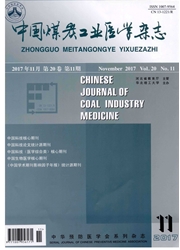

 中文摘要:
中文摘要:
目的探讨循证护理模式在老年骨质疏松性股骨折患者护理中的应用效果。方法将该院骨科113例老年骨质疏松股骨折患者按照护理方法分为对照组(n=55)与观察组(n=58)。对照组给予常规护理干预,观察组在此基础上联合循证护理干预。比较二组患者护理前后Harris评分、护理前后SAS及SDS评分、护理前后SF-36生活量表评分、护理前后PSQI量表各维度评分、并发症发生率。结果 1二组患者护理后Harris评分均显著高于护理前(P〈0.05),且观察组患者护理后Harris评分均显著高于对照组患者护理后(P〈0.05);2二组患者护理后SAS及SDS评分均较护理前显著降低(P〈0.05),且观察组患者护理后上述评分均显著小于对照组患者护理后(P〈0.05);3二组患者护理后SF-36生活量表各维度(生理功能、生理职能、躯体疼痛、总体健康、活力、社会功能、情感职能及精神健康)评分均显著高于护理前(P〈0.05~0.01),且观察组患者护理后上述各维度评分均显著高于对照组患者护理后(P〈0.05);4二组患者护理后PSQI量表各维度(主观睡眠质量、入睡时间、睡眠时间、睡眠效率、睡眠障碍、催眠药物应用和日间功能障碍)评分均显著低于护理前(P〈0.05~0.01),且观察组患者护理后PSQI量表各维度评分也均显著小于对照组患者护理后(P〈0.05);5对照组不良反应总发生率为21.82%(12/55),观察组为6.90%(4/58),差异具有统计学意义(P〈0.05)。结论循证护理模式在老年骨质疏松性股骨折患者护理中的应用效果显著,应在临床上进行推广。
 英文摘要:
英文摘要:
Objective To investigate nursing model certificate application results in the patients with osteoporotic hip fracture in nursing care.Methods Totally113 cases in author's hospital orthopedics osteoporotic hip fracture patients were divided into two groups according to the methods of care.The control group(n=55)received routine nursing intervention,while the observation group(n=58)received evidence-based nursing interventions basis on the control group.Before and after nursing,Harris score,SAS and SDS scores,life questionnaire SF-36 score,PSQI score scale dimensions,complication rate were compared between two groups of patients.Results After nursing care,the nursing Harris scores of two groups were were significantly higher than before treatment(P〈0.05),and Harris scores of patients in the observation group were significantly higher than the control group(P〈0.05).SAS and SDS scores of patient after care were significantly decreased than before treatment in two groups(P〈0.05),they were also significantly lower after care in the observation group than the control group(P〈0.05).After care,the SF-36 scale scores in two groups for each dimension of life(physical function,physical function,bodily pain,general health,vitality,social function,role emotional and mental health)were significantly higher than before treatment(P〈0.05~0.01),and they were significantly higher in the observation group than that in the control group(P〈0.05).In the same way,after care,PSQI scale dimensions(subjective sleep quality,sleep latency,sleep time,sleep efficiency,sleep disorders,sleep medication use and daytime dysfunction)scores were significantly lower than before care(P〈0.05),and they wre significantly lower in the observation group than the control group(P〈0.05).The adverse reaction rate was 21.82%(12/55)in the control group vs 6.90%(4/58)in the observation group,the difference was statistically significant(P〈0.05).Conclusion Evidence-based care model appli
 同期刊论文项目
同期刊论文项目
 同项目期刊论文
同项目期刊论文
 期刊信息
期刊信息
